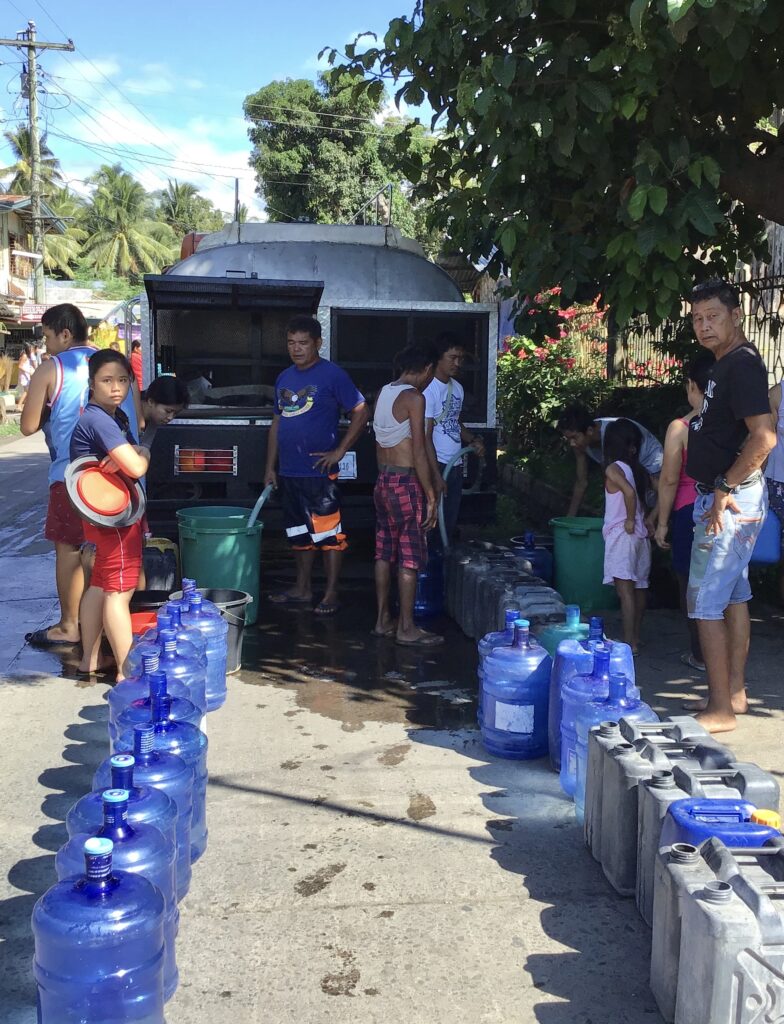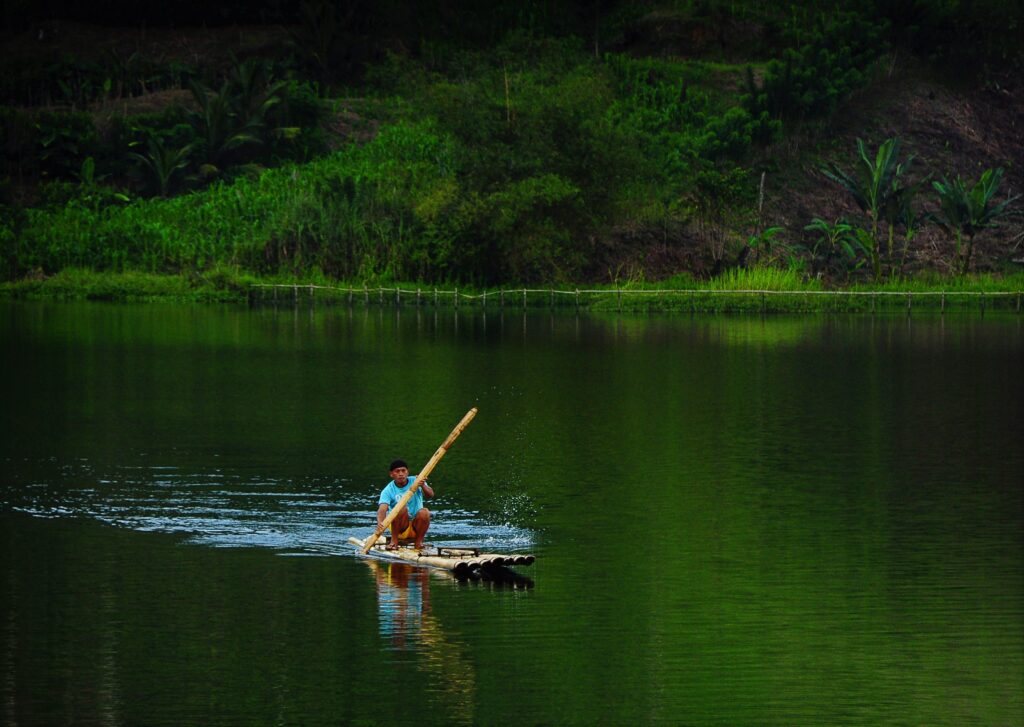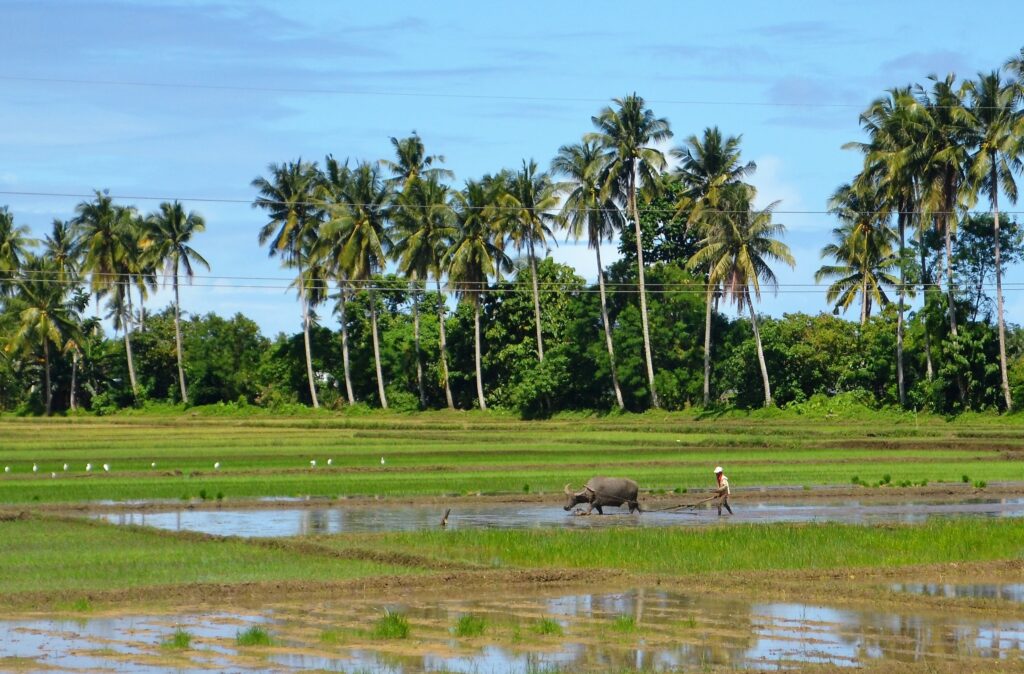Text and Photos by Henrylito D. Tacio
For a country with more than 7,000 islands and surrounded by waters, it is unlikely for the Philippines to experience water shortage. But the truth is, it has, and experts fear the problem will worsen in the coming years.
In the past, Filipinos could drink tap water directly from their faucets. Such is not the case anymore. More and more people are buying mineral water just to quench their thirst. Plastic bottles of water are being sold in bus terminals and even on sidewalks.
“The image of water-rich Philippines is a mirage,” declared Gregory C. Ira, who used to be the head of the Water Equity in the Lifescape and Landscape Study (WELLS) program of the Silang-based International Institute of Rural Reconstruction. “There is a water crisis in the Philippines, one of the wettest countries of Southeast Asia.”
Metro Manila, home to more than 10 million people, is “currently experiencing water deficits,” notes a World Bank report. Citing a study conducted by Japan International Cooperation Agency (JICA), the metropolis had an annual water demand of 1,068 million cubic meters (MCM) in 1995. The demand will more than double by 2025 to 2,883 MCM.

Residents of Davao City, the country’s largest urban center in terms of land area, may soon wake up without water flowing from their faucets. From an annual water demand of 50 MCM in 1995, this will increase to triple as the demand is forecasted to be 153 MCM.
Metro Cebu, the main urban center of the province of Cebu, is even more critical. The annual water demand will more than quadruple: from 59 MCM in 1995 to 342 MCM in 2025.
These three major cities were cited in the JICA study as the nine “water critical areas.” The six other cities included were Angeles, Bacolod, Baguio, Cagayan de Oro, Iloilo, and Zamboanga. “All major cities, except Angeles and Iloilo, show a water supply deficit until 2025,” the study said.
Among the Southeast Asian countries, the Philippines ranks second the lowest in terms of per capita water availability per year with only 1,907 cubic meters, according to the Washington, D.C.-based World Resources Institute. Thailand ranked first with only 1,854 cubic meters.
According to the World Bank, areas where the capita water supply drops below 1,700 cubic meters per year experience water stress, while areas with per capita water supply below 1,000 cubic meters per year are already experiencing water scarcity.

“Water isn’t just a commodity. It is a source of life,” said Sandra Postel, director of the Massachusetts-based Global Water Policy Project.
Ideally, a person should have at least 50 liters of water each day to meet basic needs – for drinking, food preparation, cooking and cleaning up, washing and personal hygiene, laundry, and house cleaning.
Postel believes water problems will trail climate change as a threat to the human future. “Although the two are related, water has no substitutes,” she said in an exclusive interview. “We can transition away from coal and oil to solar, wind and other renewable energy sources. But there is no transitioning away from water to something else.”
Although water is a renewable resource, it is also a finite one. Less than 3% of the world’s water is fresh, and more than 75% of this is frozen – mainly at the North and South Poles. Of the remaining freshwater, 98% of it lies underground. People and land-dwelling animals can only access about 0.01% of all the world’s water.
According to the Food and Agriculture Organization, if all the earth’s water were to fit in a gallon jug (4 liters), the available freshwater would be just over one tablespoon. “Water is not like oil: there is no substitute,” reminded Mark Rosegrant, a senior research fellow at the Washington-based International Food Policy Research Institute.
Water is one of the natural resources the Philippines is endowed with. Its water resources include inland freshwater (rivers, lakes, and groundwater) and marine (bay, coastal, and oceanic waters). “Overall, there is sufficient water but not enough in highly populated areas, especially during dry season,” notes the World Bank.

Among these water sources, groundwater plays a significant role. The National Water Resource Bureau reports groundwater contributes 14% of the country’s total water resource potential. The extraction potential is estimated at 20,200 MCM per year.
“Groundwater is used for drinking by about 50% of the people in the country,” World Bank states. Almost half (49%) of groundwater is consumed by the domestic sector, followed by agriculture (32%), industry (15%), and other sectors (4%).
“In terms of sectoral demand, agriculture has a high demand of 85%, while industry and domestic have a combined demand of only 15%,” the World Bank points out.
As water can be accessed anytime, anywhere, people seem to take it for granted. “Today, we withdraw water far faster than it can be recharged – unsustainably mining what was once a renewable resource,” deplored Janet Abramovitz, of the Worldwatch Institute.
“We are consuming water that belongs to future generations,” decried Lester R. Brown, head of the Earth Policy Institute.
In the Philippines, it’s not just inconsiderate withdrawal that is causing water shortage. “Population growth, urbanization, and industrialization reduce the quality of Philippine waters, especially in densely populated areas and regions,” the World Bank states.
Polluting the water sources compounds the problem. Among the three main sources of water, pollution is domestic (municipal), industrial, and agricultural. “They can be classified further as either point sources, which emit harmful substances directly into the body of water, or nonpoint sources, which are scattered and deliver pollutants indirectly,” the World Bank explains.
Domestic effluents are generated by activities such as bathing, cleaning, sanitation, laundry, cooking, washing, and other kitchen activities. Domestic wastewater contains a large amount of organic waste with suspended solids and coliforms.
Industrial wastewater may be organic and/or inorganic. Most industries discharge large amounts of wastewater, such as food and dairy manufacturing, pulp, paper, paperboard products, textile products, and others.
Most of the domestic and industrial wastewaters are prevalent in urban areas. In the rural areas, the major source of water pollution is agricultural farms. Among the polluting materials are organic waste like decayed plants, livestock manure, dead animals; soil loss in the form of suspended solids; and pesticides and fertilizer residues.

“Untreated wastewater affects health by spreading disease-causing bacteria and viruses, makes water unfit for drinking and recreational use, threatens biodiversity, and deteriorates overall quality of life,” the World Bank stresses.
As a result, water-borne diseases are here to stay. “Known diseases caused by poor water include gastroenteritis, diarrhea, typhoid, cholera, dysentery, and hepatitis,” the World Bank says. “The number of water-related health outbreaks including deaths reported in newspapers is going up.”
Another concern related to water shortage is the deterioration of watersheds in most parts of the country. “Watershed supply water according to the requirements of various domestic and industrial water and irrigation systems, as well as hydroelectric dams,” the World Bank states.
The diminishing forest cover is identified as “one of the most formidable environmental challenges” the country faces today. “Of the country’s total forestland area of 15.88 million hectares, only 5.4 million hectares of these are left with old growth forests,” the World Bank deplores.
Denuding the forest of its cover and inappropriate land-use practices have disrupted the hydrological condition of watersheds, “resulting in accelerated soil erosion, siltation of rivers and valuable reservoirs, increased incidence and severity of flooding, and decreasing supply of potable water.”
Water shortage is real. Something must be done soon to solve this problem before it escalates.
“World demand for water doubles every 21 years, but the volume available is the same as it was in the Roman times,” said Sir Crispin Tickell, the former British ambassador to the United Nations and one of the organizers of the 1992 Earth Summit in Rio de Janeiro, Brazil. “Something has got to give.”
So much so that some companies are trying to help abet the forthcoming water crisis as their corporate social responsibility. Take the case of San Miguel Corporation (SMC), the country’s largest corporation in terms of revenue.
Some years back, SMC launched its “water sustainability initiative,” which aimed to cut by 50% all domestic and utility use of water across all its businesses by 2025. In a press statement, SMC outlines four methods to accomplish its objective:
Eliminate wastage of water across its operations: “We will adopt new and stricter measures to improve the efficiency of our water use, as well as utilize water-saving technologies and implement conservation programs.”
Reuse and recycle more water: “We will optimize all our wastewater treatment facilities to further lessen our water footprint. We commit to make greater use of treated greywater for non-essential purposes.”
Reduce its use of ground and surface water and protect vital water resources: “We will continue to lessen our use of ground and surface water, protect these water sources, and empower our communities to do the same.”
Harvest rainwater: “We will harvest rainwater and runoff water from creeks and rivers – collecting, filtering, and storing it for irrigation and for various other purposes. We hope that others will follow our example.”

